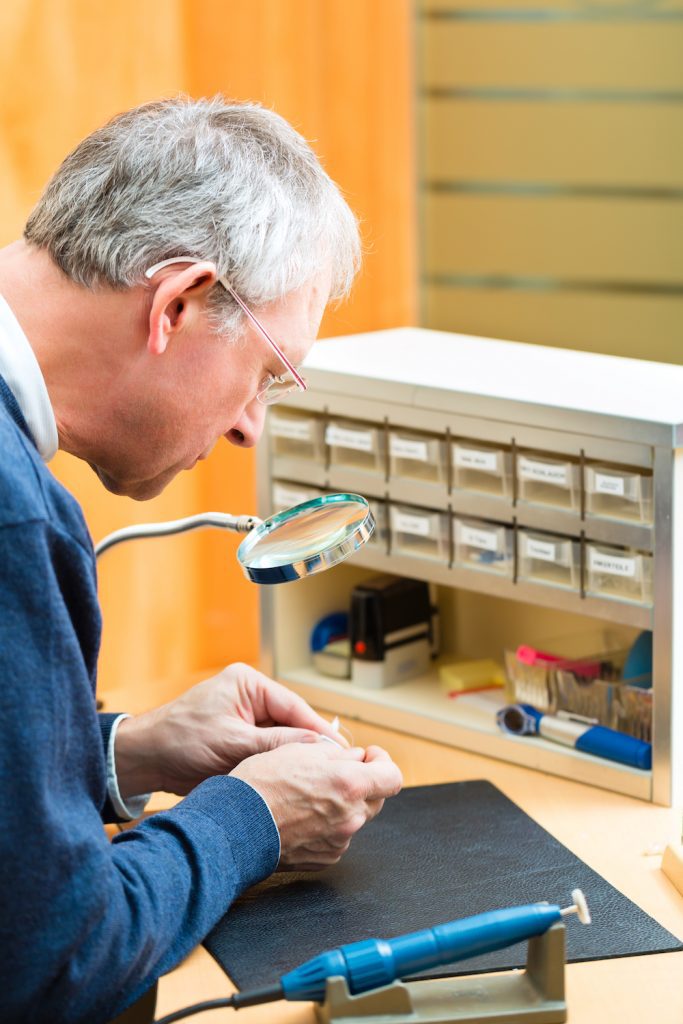
Proper care, maintenance, and cleaning of your hearing aid will make sure that it works as intended and will prevent you from having to go back to your hearing instrument specialist (HIS) for repeated repairs. Hearing aids come in a variety of shapes and types. Every model has three areas that require routine maintenance.
- The shell
- The receiver
- The microphone
The Shell
The shell is the hearing aid’s outer surface. Wax or particles on the shell of a hearing aid can interfere with proper fit, cause ear discomfort or adversely affect the mobility of internal components such as the volume control.
Wax will most likely accumulate in the bent areas of the shell of in-the-ear (ITE) models. Dirt and oils can build up in any groove or crease of a hearing aid that fits behind the ear.
- Never clean your hearing aid with a soaking wet cloth or any synthetic cleaning products.
- For more obstinate wax accumulation, dampen the tissue or cloth slightly.
- If the buildup is particularly difficult, try using the brush that came with your hearing aid or pay a visit to your HIS.
The Receiver
Wax buildup in the receiver is the most common cause of hearing aid malfunction, second only to a flat battery. The receiver is the opening that guides sound from the hearing aid’s speaker to your ear. Most buildup can be avoided by cleaning the brush daily. If wax clogs the receiver, additional cleaning may be required.
- Always be delicate when cleaning out the receiver, using too much pressure may cause it to break.
- Make use of the wax pick that came with your hearing aid. Insert the pick into the opening until you encounter resistance, then pull it out. Repeat until the opening is wax-free.
- Other wax prevention systems for the receiver, such as a wax guard or wax filter, may be included in some hearing aid styles. Your hearing instrument specialist will be able to advise you on the best way to clean these specialized systems.
The Microphone
Because the microphone is one of the most delicate parts of your hearing aid, it should be cleaned with extreme caution.
- Never attempt to insert anything into the microphone port.
- Turn your hearing aid upside down so the microphone port faces the floor when cleaning the microphone. As a result, any loose detritus will fall out of the microphone rather than into it.
- Brush the microphone port gently with the brush that came with your hearing aid to remove any debris.
While cleaning and caring for your hearing aids at home can greatly extend their life, you should still bring them in to be properly cared for by a professional. Consider it like taking your car to the mechanic; they may be able to detect something that needs to be repaired that you may have overlooked. They can also make changes to your devices to better match your needs. Schedule a device cleaning with your local HIS every four to six months, or as soon as you suspect something is wrong.






